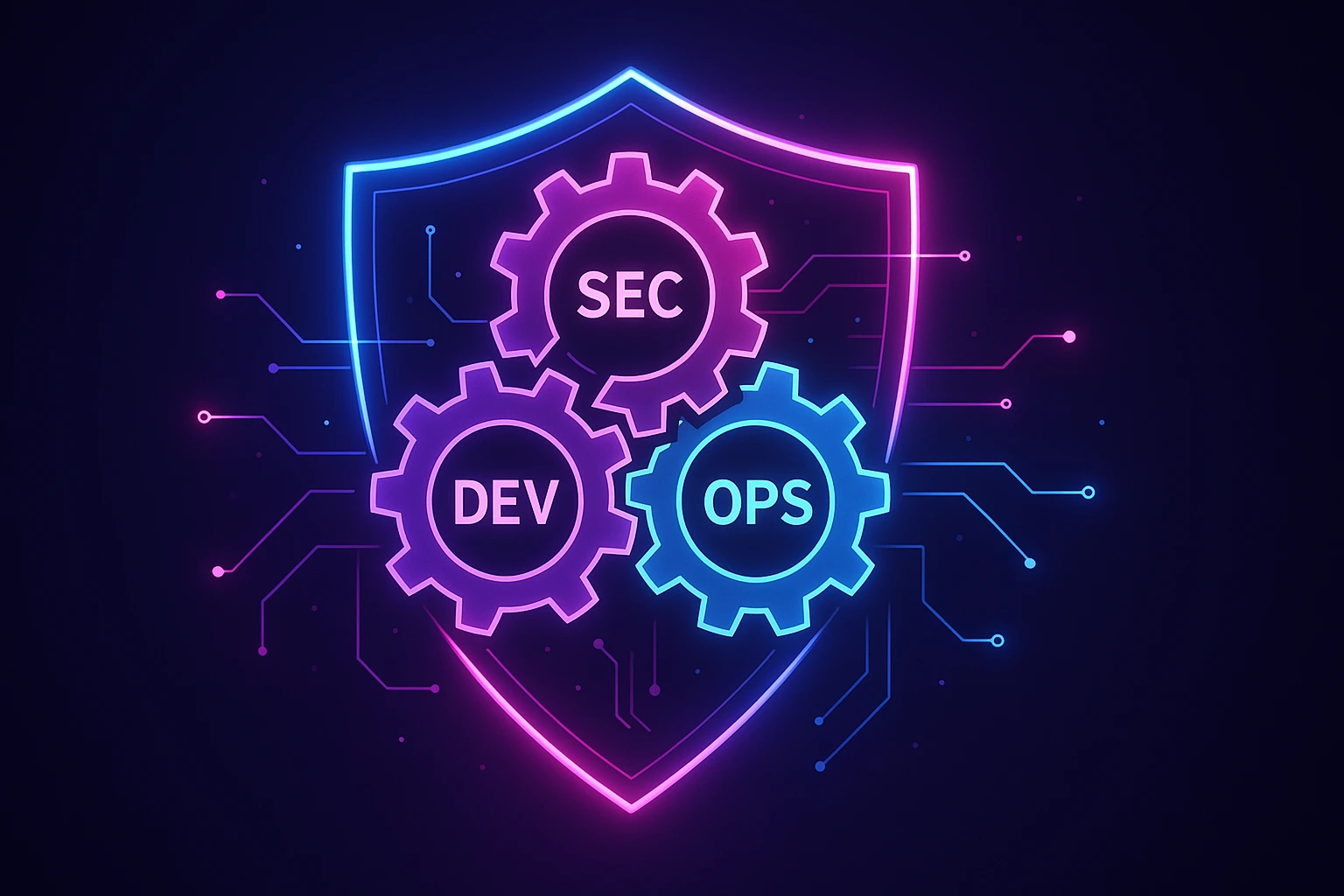Change sets in Salesforce move metadata components from one organization to another. They emerged as Salesforce's native deployment solution when most organizations operated single orgs with simple customizations. For basic deployments involving a few custom fields or workflows, change sets work adequately.
However, as teams scale beyond five developers or manage more than three environments, change sets create operational friction that compounds over time. Manual dependency tracking becomes error-prone, deployment coordination requires extensive planning, and rollback scenarios turn into recovery nightmares.
Salesforce maintains its position as a Leader in the 2025 Gartner® Magic Quadrant™ for Sales Force Automation for the 19th consecutive year, yet many teams still struggle with deployment processes that create bottlenecks, introduce errors, and prevent the rapid iteration that modern business demands.
Understanding when and why change sets fail helps teams make informed decisions about deployment strategies. This guide examines change set limitations systematically, provides clarity on when they remain viable, and explores modern alternatives that address enterprise-scale deployment requirements.
What Are Salesforce Change Sets?
Salesforce change sets are collections of customizations that move between connected orgs. They serve as Salesforce's native deployment tool for custom objects, fields, workflows, and code.
Change sets emerged from Salesforce's early architecture when orgs operated as isolated environments. The platform prioritized security and simplicity over deployment sophistication. This design choice made sense when most implementations involved single orgs with limited customization. However, as enterprise adoption expanded and teams began managing multiple environments with complex interdependencies, these architectural decisions became constraints rather than features.
The Hidden Architecture That Shapes Deployment Behavior
Change sets operate through a request-response model that reflects Salesforce's commitment to platform security but creates deployment rigidity. When you create an outbound change set, Salesforce generates a static snapshot of selected components. This snapshot cannot adapt to changes in the source organization or account for environmental differences in the target organization.
- Outbound Change Sets: Created in your source organization, these contain the components you want to deploy. The platform serializes metadata into a deployment package that remains fixed until you create a new version. This immutability protects against mid-deployment changes but prevents dynamic dependency resolution.
- Inbound Change Sets: Received in your destination organization, these allow you to review and deploy components. The validation process runs against the target environment's current state, which may differ significantly from the source environment where the change set was created. This temporal gap often produces validation errors that require recreating the entire change set.
The Four-Phase Deployment Process
Successful change set deployment requires understanding not just the documented process, but the hidden decision points where most deployments encounter problems. Each phase contains critical junctures where seemingly minor choices determine deployment success or failure.
Environment Orchestration
Connection establishment between orgs involves more than simple configuration. The deployment connection creates a trust relationship that governs not just data transfer, but metadata interpretation across potentially different Salesforce releases, feature sets, and customization histories.
Environmental configuration factors that impact deployment success:
- API version alignment between source and target orgs
- Feature license compatibility and enablement status
- Organization-wide defaults that affect component behavior
- User context and permission model differences
Component Selection and Dependency Management
Metadata dependency mapping in Salesforce operates like a graph database where components reference each other through explicit and implicit relationships. Change sets require manual dependency identification, but Salesforce's dependency engine operates through multiple layers that often surprise even experienced administrators.
Direct dependencies are obvious: a custom field requires its parent object. Indirect dependencies create deployment complexity: that custom field may be referenced in validation rules, workflow field updates, process builder criteria, flow formulas, and report filters. Change sets cannot automatically detect these relationships, particularly when they cross metadata boundaries.
Essential dependency analysis tasks:
- Map explicit metadata references through object relationships
- Identify implicit dependencies through formulas and automation
- Validate environmental prerequisites and assumptions
- Test component behavior in isolation before packaging
Validation and Error Resolution
Validation represents the most critical phase because it's your last opportunity to identify problems before deployment execution. However, Salesforce's validation feedback often obscures the root cause of issues behind technical error messages that require deep platform knowledge to interpret correctly.
Validation errors fall into categories that demand different resolution approaches. Dependency errors indicate missing components but don't explain why those components are missing or whether they should be included. Permission errors may indicate security model differences between environments rather than actual permission problems.
Critical validation analysis steps:
- Categorize errors by type to identify resolution patterns
- Distinguish between fixable dependency issues and environmental conflicts
- Assess validation shelf life based on target environment change frequency
- Develop rollback plans for validation failures discovered during deployment
Deployment Execution and Verification
Once deployment begins, change sets provide limited visibility into progress and minimal control over the process. Unlike modern deployment tools that offer granular control and real-time feedback, change sets operate as black boxes that either succeed completely or fail with limited diagnostic information.
Post-deployment verification becomes critical because change sets don't validate that deployed components function correctly in the target environment. A component may deploy successfully but behave differently due to environmental differences that validation missed.
Scalability Barriers
Change sets work within a narrow operational envelope that becomes constraining as teams and implementations mature. Understanding these constraints helps teams recognize when they've outgrown change set capabilities rather than assuming they need to improve their change set processes.
The Concurrent Development Challenge
Change sets assume sequential development where teams complete features before beginning deployment. This model conflicts with modern development practices where teams work on multiple features simultaneously and expect to deploy frequently with minimal coordination overhead.
When multiple teams deploy simultaneously, change sets create coordination bottlenecks. Team A cannot deploy until Team B finishes because their change sets might conflict. This serialization kills development velocity and creates artificial dependencies between unrelated features.
The problem intensifies with hotfixes and emergency deployments. When production issues require immediate fixes, teams must either wait for scheduled deployments to complete or create separate change sets that risk conflicts with in-progress deployments.
Metadata Compatibility Limitations
Certain metadata types remain outside change set capabilities by design. Organization-wide defaults, some user configurations, and environmental settings require manual configuration because they represent system-level decisions rather than portable customizations.
These exclusions force teams into hybrid deployment approaches where some changes deploy through change sets while others require manual configuration. The exclusion zone expands over time as Salesforce adds features that don't fit the change set model.
Planning considerations for unsupported components:
- Manual configuration documentation and procedures
- Environmental synchronization and consistency verification
- Deployment coordination across multiple methods
- Testing procedures for manually configured components
Integration and Tool Chain Gaps
Modern development teams expect deployment tools to integrate with their existing toolchains: version control, testing frameworks, project management, and monitoring systems. Change sets operate as isolated tools that don't integrate with external systems, forcing teams to maintain separate processes for deployment vs. development.
This isolation creates information silos where deployment status doesn't sync with project management tools, deployment logs don't correlate with monitoring data, and version control remains separate from deployment tracking. Teams lose visibility into the relationship between code changes and deployment outcomes.
Enterprise Requirements and Compliance Gaps
Deployment processes represent critical control points in enterprise security architecture. Change sets provide basic security through user permissions but lack the advanced controls that enterprise environments require.
Audit Trail and Documentation Limitations
Change sets generate basic deployment logs but lack the detailed audit trails that regulatory frameworks require. The logs show which components were deployedwhat components deployed and when, but not who requested the changes, why they were needed, or how they were approved. This creates compliance gaps that become problematic during audits.
Regulatory frameworks like SOX require demonstrating control over system changes through documented approval processes and change justification. Change sets provide deployment mechanics but no approval workflow integration. Teams must maintain separate documentation systems that often become outdated or incomplete.
Security and Access Control Constraints
The compliance gap widens with role separation requirements. Many regulations mandate separation between development, testing, and production deployment roles. Change sets operate through individual user accounts rather than role-based systems, making it difficult to demonstrate proper control segregation.
Compliance requirements that expose change set limitations:
- Audit trail completeness for regulatory review
- Approval workflow integration and documentation
- Role separation and access control demonstration
- Change justification and business impact documentation
Economic Impact and ROI Considerations
Deployment method decisions have financial implications that extend beyond tool licensing costs. Understanding the total economic impact helps justify investment in advanced deployment capabilities.
The Hidden Cost Structure of Manual Deployment
Manual deployment processes create costs that often remain invisible until teams attempt to scale. Developer time spent on deployment activities represents opportunity cost where those resources could focus on feature development. Deployment failures create cascading costs through delayed releases, emergency fixes, and customer impact.
The cost structure includes direct labor costs for deployment activities, indirect costs from deployment delays affecting other teams, and risk costs from potential failures and their business impact. Manual processes also create scaling costs where deployment overhead increases faster than team size.
Cost categories for manual deployment analysis:
- Direct labor costs for deployment planning, execution, and troubleshooting
- Opportunity costs from development time diverted to deployment activities
- Delay costs from deployment bottlenecks affecting release schedules
- Risk costs from deployment failures and their business impact
ROI Modeling for Deployment Automation
Investment in deployment automation delivers returns through reduced manual effort, improved deployment reliability, and faster release cycles. However, calculating ROI requires understanding both cost reduction and capability enhancement benefits.
Cost reduction comes from automating manual activities and reducing deployment failures. Capability enhancement enables teams to deploy more frequently, respond faster to business requirements, and maintain higher quality through automated testing and validation.
ROI factors for deployment automation:
- Manual effort reduction through process automation
- Deployment reliability improvement and failure cost reduction
- Release frequency increase and time-to-market improvement
- Quality enhancement through automated testing and validation
The Evolution to Modern Deployment Solutions
Teams that outgrow change sets need deployment solutions that address scalability, reliability, and integration requirements. The transition requires understanding not just tool capabilities, but operational changes that enable teams to work more effectively.
DevOps Integration and Continuous Deployment
Modern deployment platforms integrate Salesforce development with established software engineering practices. This integration enables teams to apply proven methodologies like continuous integration, automated testing, and controlled rollouts to Salesforce deployments.
The key insight is that Salesforce development benefits from the same practices that improve traditional software development: version control, automated testing, and deployment pipelines. However, Salesforce's metadata model requires specialized tools that understand platform nuances while providing integration capabilities.
Essential DevOps capabilities for Salesforce deployment:
- Version control integration with branch and merge strategies
- Automated testing frameworks that validate Salesforce-specific functionality
- Deployment pipelines that handle metadata dependencies automatically
- Rollback capabilities that work within Salesforce constraints
Automated Dependency Resolution
Traditional change set workflows encourage infrequent, large deployments that bundle multiple features and fixes together. This approach increases deployment risk because large changes are harder to test, more likely to contain conflicts, and more difficult to roll back when problems occur.
Continuous integration reverses this philosophy by enabling frequent, small deployments that contain isolated changes. Each deployment becomes easier to test, less likely to conflict with other changes, and simpler to roll back if necessary.
Enterprise Deployment Orchestration
Enterprise Salesforce environments often involve multiple organizationss, external integrations, and complex data relationships that change sets cannot handle. Advanced deployment platforms provide orchestration capabilities that coordinate changes across multiple systems while maintaining consistency and reliability.
Orchestration involves more than just deploying to multiple targets. It requires understanding the relationships between systems, managing deployment sequences to avoid conflicts, and providing rollback capabilities that work across system boundaries.
Platform Evolution and Future Considerations
Salesforce continues evolving with new capabilities that affect deployment requirements. Teams need deployment strategies that adapt to platform changes while maintaining operational stability.
AI Integration Impact
Salesforce's AI capabilities introduce new metadata types and deployment scenarios that traditional change sets cannot handle effectively. AI models, training data, and intelligent automation create dependencies that require specialized deployment approaches.
The challenge extends beyond deploying AI components to managing their behavior across environments. An AI model trained in one environment may behave differently in another due to data differences or environmental configuration variations.
AI deployment considerations:
- Specialized metadata types that require advanced deployment tools
- Cross-environment behavior validation for AI components
- Training data management and synchronization across environments
- Performance and accuracy testing for AI-enabled features
Platform Scalability Preparation
Salesforce platform capabilities continue expanding with new features, integration options, and customization possibilities. This expansion increases deployment complexity as implementations leverage more platform capabilities and integrate with more external systems.
Future-ready deployment strategies anticipate continued platform evolution while maintaining operational effectiveness. This requires flexible tools and processes that can adapt to new capabilities without requiring complete operational overhaul.
Scalability preparation strategies:
- Flexible deployment architectures that accommodate new metadata types
- Modular processes that scale with team size and complexity
- Integration capabilities that support evolving external system requirements
- Monitoring and feedback systems that provide visibility into deployment effectiveness
Moving Beyond Change Sets: Native Solutions for Modern Teams
Moving beyond change sets requires more than tool replacement. Teams need strategies that preserve operational continuity while building new capabilities that deliver measurable improvements.
The Native Architecture Advantage
Flosum operates entirely within Salesforce, providing automation, governance, and scalability capabilities while maintaining familiar security models and user experiences. This eliminates security concerns associated with external deployment tools while providing enterprise-grade capabilities. Flosum's 100% native platform ensures data never leaves Salesforce, addressing the compliance requirements that enterprise teams face.
Intelligent Automation Capabilities
Flosum's artificial intelligence (AI) insights help teams understand deployment impact and identify potential issues before execution, transforming the guesswork of change set dependency mapping into predictable, reliable processes. Automated rollback capabilities provide the safety net that change sets lack, where teams can restore previous configurations quickly without manual recovery processes.
The City and County of Denver reduced deployment time from 8 hours to under 15 minutes, achieving 70% faster deployments while increasing sprint velocity by 40%. Their team now handles deployments that previously required both a developer and release manager with just one resource.
Enterprise Governance Integration
Built-in approval workflows, audit trails, and compliance reporting address regulatory requirements automatically while Flosum integrates backup and recovery systems to ensure complete data protection throughout the deployment lifecycle.
Cushman & Wakefield achieved 3x improvement in development velocity and 50% reduction in audit time while maintaining SOX compliance. The global commercial real estate leader transitioned from Jenkins-based workflows to Flosum's integrated DevSecOps platform, streamlining processes without sacrificing security standards.
For organizations managing complex Salesforce environments, the question isn't whether to evolve beyond change sets, but how quickly they can implement Flosum's modern deployment solution. Request a demo to explore how Flosum transforms deployment from a bottleneck into a competitive advantage.
Thank you for subscribing









